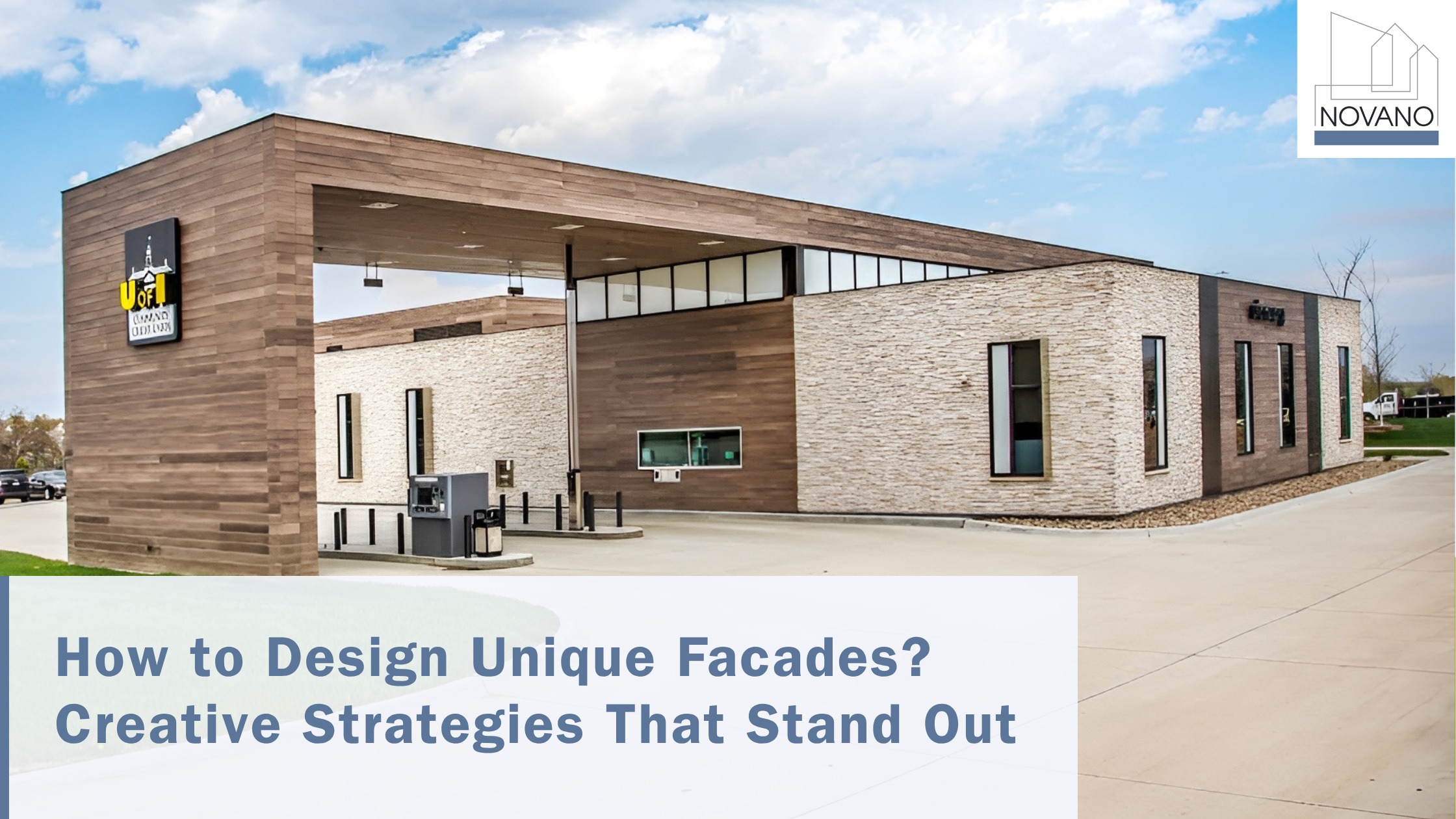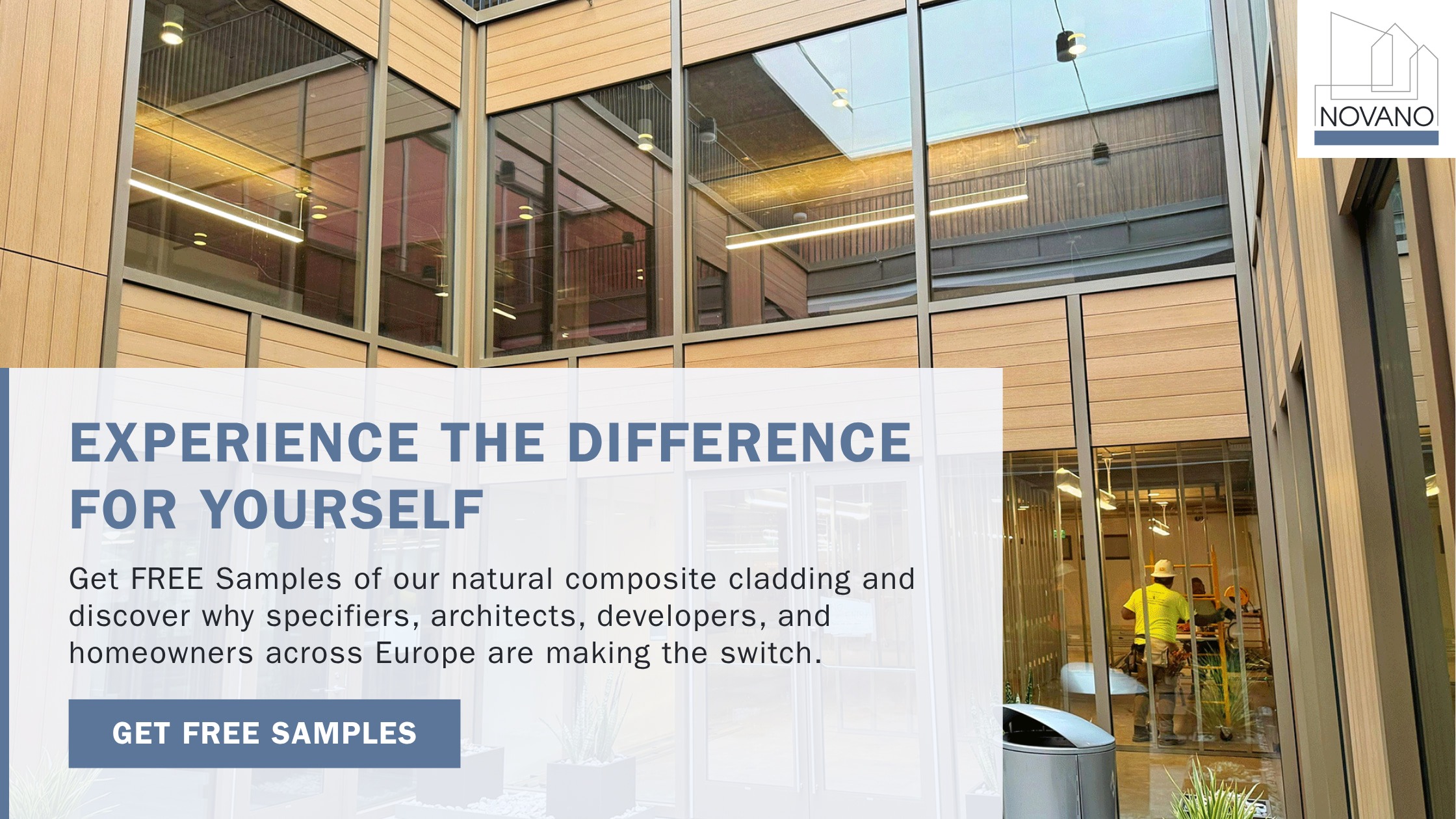
Summary
Designing unique façades requires a blend of creativity, contextual awareness, and sustainable materials. This guide explores dynamic patterns, bold colours, smart technology integration, and eco-friendly solutions to help architects and developers craft façades that stand out while respecting cultural and environmental settings.
- Summary
- The Art and Impact of Façade Creativity
- Key Takeaways
- Foundations of a Stand-Out Façade Design
- Creative Strategies for Unique Façades
- Integrating Technology into Façade Design
- Sustainable Creativity: Designing with Purpose
- Overcoming Design Challenges for Unique Façades
- Navigating Planning and Heritage Constraints
- Balancing Budget and Creativity
- Collaborative Design Processes
- Future Trends in Creative Façade Design
- Building a Legacy Through Façade Innovation
- FAQs
How to Design Unique Façades? Creative Strategies That Stand Out
The Art and Impact of Façade Creativity
Distinctive façades have become essential in modern architecture. They not only frame the visual identity of a building but also communicate its purpose, cultural context, and values to the public. In competitive urban environments across the United Kingdom, Germany, and broader Europe, unique façades help buildings and their brands stand apart. These designs are more than ornamental, they shape first impressions, contribute to place-making, and reflect a balance between creativity, functionality, and sustainability.
In the UK and Germany, façades often blend tradition with innovation. Designers balance historical context with contemporary aesthetics, ensuring buildings remain relevant for decades. Achieving this balance means paying attention to performance as much as appearance, creating exteriors that are durable, energy-efficient, and environmentally responsible.
By embracing both creativity and technical excellence, architects can craft façades that tell a story, stand the test of time, and contribute positively to their surroundings.
Key Takeaways
✓ Unique façades balance creativity, performance, and sustainability. This combination ensures both visual appeal and long-term function.
✓ Material choice shapes a building’s character and affects how long it lasts. Selecting the right one supports durability and design goals.
✓ Technology allows for new levels of customisation and striking visual effects. It opens possibilities that were once impossible with traditional methods.
✓ Novano’s hybrid siding profiles offer bold design potential while staying eco-friendly. It delivers both style and environmental responsibility.
Foundations of a Stand-Out Façade Design
Understanding Context
Façade design starts with understanding the building’s setting. In dense urban areas, designs should complement neighbouring structures while adding fresh visual interest. In rural settings, materials and colours often draw inspiration from the landscape.
In both the UK and Germany, planning regulations can influence height, materials, and colour. Successful designs work within these parameters while maintaining a distinctive identity.
Blending Form and Function
A façade should be as functional as it is beautiful. For example, shading devices can reduce solar heat gain while creating sculptural depth. Operable elements can improve ventilation while adding movement and texture.
Material Language
Textures, colours, and finishes are key to establishing a façade’s personality. Material choice should consider:
- Durability against local climate
- Fire and acoustic performance
- Ease of maintenance
- Long-term colour stability
Creative Strategies for Unique Façades
Dynamic Patterns and Geometries
Unconventional patterns, whether inspired by nature, geometry, or cultural motifs, can make a building instantly recognisable. Dynamic patterns also transform flat surfaces into engaging visual experiences.
Asymmetry, fractals, or rhythmical repetition create visual intrigue while maintaining balance. Consider these effective pattern strategies:
- Asymmetrical arrangements – Create visual movement through irregular but balanced compositions
- Geometric progressions – Use mathematical sequences to generate sophisticated patterns
- Nature-inspired designs – Draw from fractals, leaf structures, or wave formations
- Repetition with variation – Maintain harmony while preventing monotony
Bold Colour Stories
Colour can define a façade’s mood and impact. Gradients, contrasting tones, and colour blocking can highlight architectural features. In Germany, earthy neutrals often blend into historic areas, while vibrant accents are popular in contemporary districts.
Layering and Depth
Three-dimensional elements like projections, recessed panels, and shading devices add depth to what may otherwise be flat surfaces. These layers change how façades interact with natural light throughout the day, creating shifting shadows and highlights. This dynamic light play animates façades, adding richness and complexity to the visual experience.
Integrating Technology into Façade Design
Digital Fabrication and Customisation
Advanced digital tools like CNC machining, 3D printing, and parametric modelling enable architects to create bespoke panels and façade components with precision. These technologies unlock complex shapes and designs that would be difficult or costly to produce traditionally, allowing true originality and adaptability.
Responsive and Adaptive Systems
Smart façades that respond to environmental changes, like temperature, daylight, or occupancy, are transforming building envelopes. According to the European Commission on Smart Building Integration, such façades enhance energy efficiency and occupant comfort by automatically modulating shading, ventilation, or insulation.
Lighting as a Design Tool
Programmable LED lighting and mapping techniques allow façades to become interactive canvases, enhancing nighttime visibility and identity. Commercial and public buildings, especially, benefit from lighting that highlights architectural features and engages communities after dark.
Sustainable Creativity: Designing with Purpose
Low-Impact Materials
Environmental responsibility increasingly influences façade material selection. When selecting sustainable facade materials, consider:
- Recyclable components – Choose materials with established recycling pathways
- Renewable resources – Prioritise rapidly renewable or bio-based materials
- Low-carbon production – Evaluate manufacturing energy requirements and emissions
- Local sourcing – Reduce transportation impacts through regional suppliers
The Fraunhofer Institute highlights that such materials can significantly cut a building’s lifecycle emissions. Life cycle considerations extend beyond initial environmental impact to include maintenance requirements, replacement frequency, and end-of-life disposal or recycling options.
Merging Sustainability with Aesthetics
Sustainable façades maintain elegance while performing well under diverse climate conditions, from urban centres to coastal zones. Proper design ensures long-lasting beauty and functionality, protecting resources and reducing maintenance costs over decades.
Novano’s Hybrid Approach
NOVANO Building Products Europe offers a range of wood-free, recyclable siding profiles that combine sustainability with visual versatility. Our Class 1 fire-rated boards are available in modern colours and textures, ideal for projects seeking unique character without sacrificing durability. Architects can get FREE Samples to explore how these materials perform in real-world settings.
Overcoming Design Challenges for Unique Façades
Navigating Planning and Heritage Constraints
Historic districts often have strict rules on façades. Designs should respect local character while introducing subtle modern elements. The UK Planning Portal offers guidance on building regulations.
Balancing Budget and Creativity
Creative façades don’t require unlimited budgets. Strategic investments in key visual elements often create more impact than expensive treatments applied uniformly across entire buildings.
Phased implementation allows projects to spread costs over time while testing and refining design approaches. Initial installations can inform improvements for subsequent phases. Value engineering should focus on life cycle costs rather than just initial expenses. Higher-quality materials with longer service lives often provide better total value despite higher upfront costs.
Collaborative Design Processes
Successful façade innovation requires close collaboration between multiple stakeholders. Key team members should include:
- Architects – Provide design vision and aesthetic direction
- Engineers – Ensure structural integrity and performance standards
- Fabricators – Confirm manufacturability and cost parameters
- Installers – Validate construction feasibility and sequencing
Early involvement of all stakeholders prevents design decisions that create fabrication or installation challenges.
Other Tips:
Physical mockups and prototypes allow teams to test and refine details before full-scale implementation. Virtual reality and 3D modelling help visualise completed designs, but physical samples remain essential for evaluating material qualities and construction details. Regular design reviews with all stakeholders ensure that the creative vision remains achievable throughout the development process.
Future Trends in Creative Façade Design
✓ AI-assisted design is making it easier to explore multiple concepts quickly.
✓ Climate-adaptive façades that self-adjust for energy efficiency are gaining momentum.
✓ Art-architecture collaborations are producing façades that double as large-scale public art.
✓ Hybrid natural materials that outperform traditional wood are being adopted for their durability, low maintenance, and sustainable benefits.
Building a Legacy Through Façade Innovation
Unique façades combine creative vision, functional design, and responsible material choices. They shape how people experience a building and how it fits within its community.
For architects and developers seeking distinctive yet durable designs, NOVANO Building Products Europe provides sustainable, fire-rated, and fully customisable façade materials. Explore our siding profiles and Get FREE Samples to bring your next façade concept to life.
FAQs
What design techniques make a building façade stand out?
Combining bold colours, distinctive patterns, layered textures, and creative lighting can give a façade a unique identity. These elements work together to make the building visually memorable.
How can sustainability be integrated into creative façade design?
Select recyclable, low-impact materials and design for durability in the local climate. This ensures long-term performance while reducing environmental impact.
What are the latest trends in architectural façades in Europe?
Smart, climate-responsive façades and artistic collaborations are becoming more common. These approaches combine technology, function, and aesthetics. Hybrid natural materials that outperform traditional wood are also gaining popularity for their durability, sustainability, and design flexibility.
How do material choices influence a building’s visual identity?
Materials determine a façade’s texture, colour, and longevity. They also affect how well the building performs in different weather conditions.

